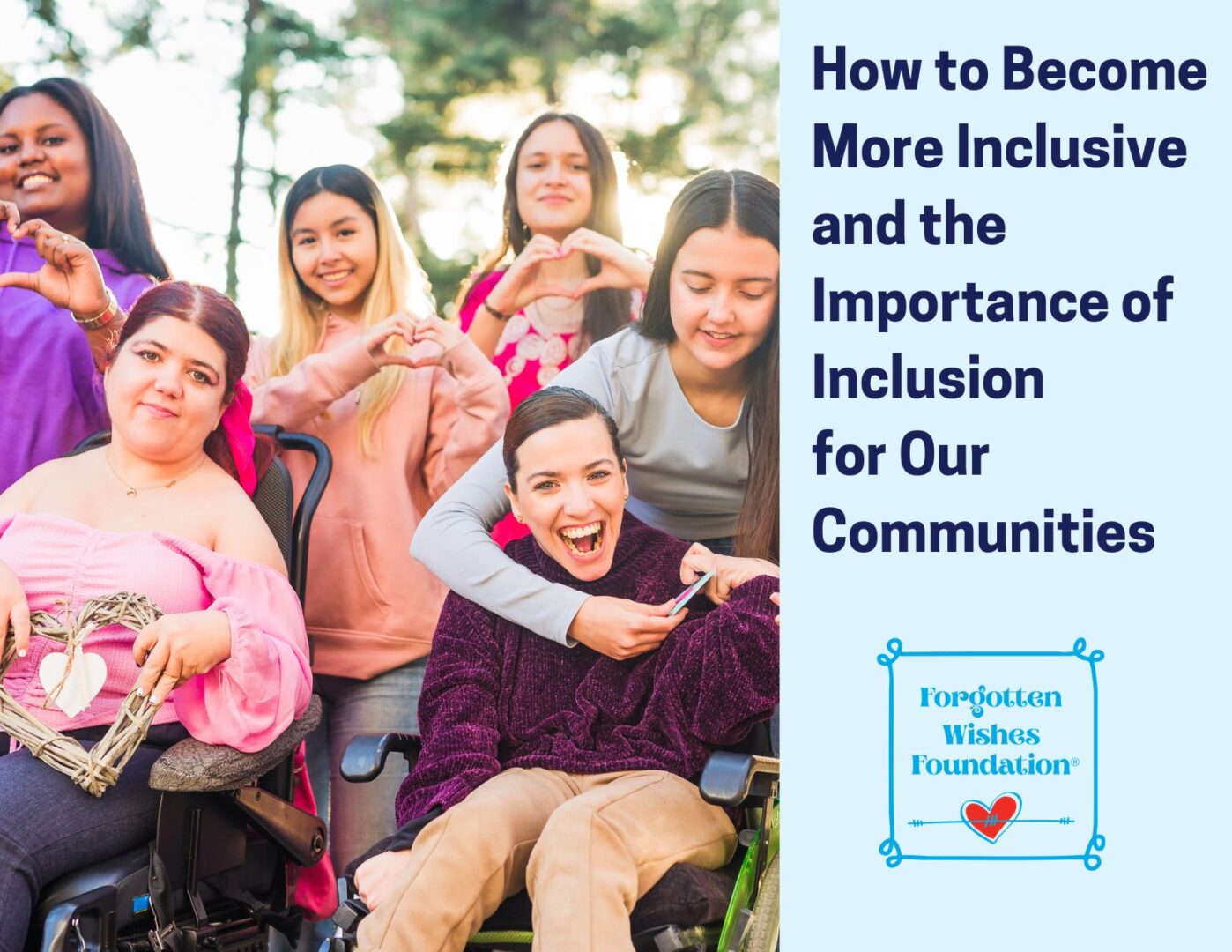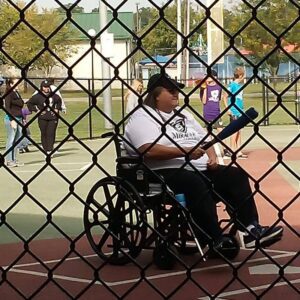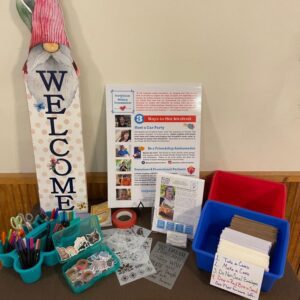
The Importance of Inclusion
Inclusion for People with Disabilities
Inclusion isn’t just a theoretical ideal; it’s a vital necessity that connects individuals with disabilities to a more active, fulfilling life. Let’s discuss why it is important to become more aware of what inclusion means for all of us today.
Obviously, living with a disability can create challenges to engaging with others and the community we live in. Imagine yourself with a disability that impairs your ability to communicate, transport yourself, or participate in activities independently. You would experience the varied barriers that prevent full engagement with your local community firsthand. These barriers are often the launching pad for feeling forgotten, excluded, and lonely.
Accordingly, this is why our Forget-Me-Not Friends Club was created: to spark joy and develop a sense of belonging for the club members. We have club members of all ages, but we see a significant gap in accessibility and inclusion once individuals “age out” of attending their local school and transition into adult life.

Understanding Inclusion
Inclusion isn’t a placement; it is a practice. Inclusion means providing individuals with disabilities equal access to opportunities and resources, allowing them to participate fully in all aspects of life. True inclusion isn’t just about being physically present; it’s about making meaningful contributions and being valued as integral members of society. It is about belonging and being welcomed into businesses, organizations, activities, churches, clubs, and more.
What Does Inclusion Look Like
When my two daughters were little, we lived in a small Illinois town with a very active sports and recreation park system. If I wanted to sign my girls up to play a sport, the park system would provide the support, which included a person to help if needed, so my youngest daughter with IDD could play along with non-disabled peers. They also had separate offerings for people who wanted to play or compete against their disabled peers. An example of one offering was a person who uses a wheelchair could participate in a basketball league where all of the players used wheelchairs on the court.

Unquestionably, this setup with the sports and recreation park system was a great example of community-based inclusion. It did not take an entirely different third-party organization or vendor to come in an establish an activity for people with disabilities. This might look like having Special Olympic Teams in the community or The Miracle League Baseball Organization. These are wonderful and I’m so happy we have them as a part of our disability community, but wouldn’t it be great if it just came naturally to provide accommodations and opportunities to participate with all of their peers?
To this day, my daughter talks about the time she and her sister were cheerleaders together and how she played T-Ball. When we had to move back to Texas, we lost this resource for her to be active and included in anything other than Special Olympic sports, which excludes her non-disabled peers. (This is not a commentary against Special Olympics – we love them – just using this as an example of how we must find a third party because it isn’t normalized to be inclusive.)

Why Inclusion Matters
For most of us, inclusion goes beyond access; it’s fundamentally about acceptance. It involves transforming environments so people facing similar challenges can live, work, and engage in leisure alongside their non-disabled peers. This includes everything from utilizing accessible technologies in education to creating policies that support individuals in the workplace and providing the necessary accommodations in community environments.
The Broader Benefits of Inclusion
Simultaneously, inclusion enriches the lives of individuals with disabilities and the entire community. Here are just two ways in which inclusive practices benefit everyone:
- Social Cohesion: Regular interaction between people with and without disabilities helps dismantle barriers of misunderstanding and prejudice, fostering a community spirit rooted in mutual respect and understanding.
- Universal Benefits of Inclusive Design: Tools and technologies initially designed for accessibility, such as automatic doors and voice-activated devices, provide convenience and usability that benefit the entire population, not just those with disabilities.
How to Promote Inclusion
Creating an inclusive environment requires active participation from all sectors of the community. The big question to ponder is, “How can we make it easier and more accessible for everyone to participate?” Here are some steps that can help:
- Promote Awareness: Participate in or organize workshops that raise awareness about the challenges faced by people with disabilities, and the benefits of inclusion can make a significant difference. Consider hosting a Card Party to support awareness and belonging for the Forget-Me-Not Friends Club.
- Accessibility Reviews: If you own a business or are active in your church or other community organizations, evaluate the level of accessibility currently provided and consider what improvements could facilitate greater accommodations for everyone.
- Advocate for Inclusive Policies: It is crucial to support local and national policies that fund disability services and promote inclusive practices in all areas of community life.

Belonging
Living with a disability in a world that often overlooks individual needs can be isolating, but it also provides a unique perspective on the importance of community. Every step toward inclusion improves the lives of people living with disabilities and enhances the richness and diversity of the community as a whole. Let’s work together toward a society where everyone’s abilities are valued and a place of belonging for all.
